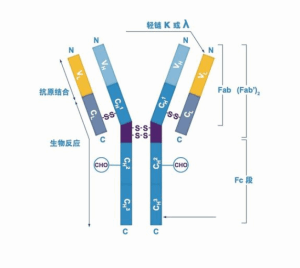英文名称Rabbit Anti-IL-1 Beta antibody
中文名称白介素1β抗体
别 名IL1B_HUMAN; Interleukin-1 beta; interleukin 1 beta; IL1F2; IL-1 beta; Catabolin; IL-1; IL1F2; IL1beta; IL1-BETA; IL-1beta; IL-1 Beta; IL-1β; IL1β; IL-1B; IL1B;
抗体来源Rabbit
克隆类型Polyclonal
交叉反应Human,Mouse,Rat (predicted: Rabbit,Dog,Horse)
产品应用WB=1:500-2000,IHC-P=1:100-500,IHC-F=1:100-500,IF=1:100-500,Flow-Cyt=2ug/Test
not yet tested in other applications.
optimal dilutions/concentrations should be determined by the end user.
理论分子量17/32kDa
细胞定位分泌型蛋白
性 状Liquid
浓 度1mg/ml
免 疫 原KLH conjugated synthetic peptide derived from human IL-1 Beta: 161-269/269
亚 型IgG
纯化方法affinity purified by Protein A
缓 冲 液0.01M TBS (pH7.4) with 1% BSA, 0.02% Proclin300 and 50% Glycerol.
保存条件Shipped at 4℃. Store at -20℃ for one year. Avoid repeated freeze/thaw cycles.
注意事项This product as supplied is intended for research use only, not for use in human, therapeutic or diagnostic applications.
PubMedPubMed
产品介绍The protein encoded by this gene is a member of the interleukin 1 cytokine family. This cytokine is produced by activated macrophages as a proprotein, which is proteolytically processed to its active form by caspase 1 (CASP1/ICE). This cytokine is an important mediator of the inflammatory response, and is involved in a variety of cellular activities, including cell proliferation, differentiation, and apoptosis. The induction of cyclooxygenase-2 (PTGS2/COX2) by this cytokine in the central nervous system (CNS) is found to contribute to inflammatory pain hypersensitivity. This gene and eight other interleukin 1 family genes form a cytokine gene cluster on chromosome 2. [provided by RefSeq, Jul 2008].
Function:
Produced by activated macrophages, IL-1 stimulates thymocyte proliferation by inducing IL-2 release, B-cell maturation and proliferation, and fibroblast growth factor activity. IL-1 proteins are involved in the inflammatory response, being identified as endogenous pyrogens, and are reported to stimulate the release of prostaglandin and collagenase from synovial cells.
Subunit:
Monomer.
Subcellular Location:
Secreted. Note=The lack of a specific hydrophobic segment in the precursor sequence suggests that IL-1 is released by damaged cells or is secreted by a mechanism differing from that used for other secretory proteins.
Similarity:
Belongs to the IL-1 family.
SWISS:
P01584
Gene ID:
3553

